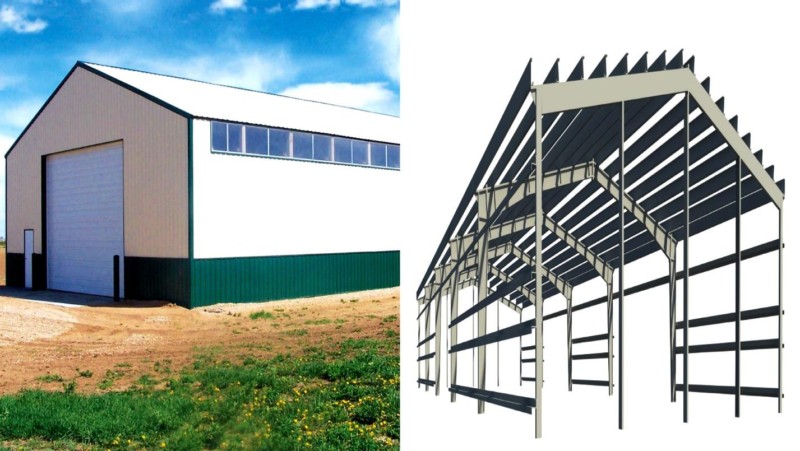The superior mechanical properties of metal building systems relative to alternative methods, such as wood, making them far more suitable for the stresses posed by floodwaters. Equally as important, metal systems such as steel possess other properties that make them ideally suited for the aftermath of floods.
Metal provides both a high strength-to-weight ratio and excellent flexibility in building materials. These properties endow steel structures with the ability to ensure high levels of strength, while also withstanding extensive deformation forces without failure. There are reasons why shipbuilders transitioned from wood construction to metal by the late nineteenth century. The metallic hull construction prevented the destruction of the ship in rough seas or if it ran aground. The higher strength also permitted the design of larger ships, which in turn could carry more cargo.
These same properties are the reasons metal structures are ideally suited to withstand large-scale forces such as those represented by a flood. People often underestimate the destructive power of flowing water until they encounter it directly or see the aftermath on television. Two feet of flowing water can carry away automobiles. Water flowing at a speed most people can jog carries the equivalent force per unit area of an EF-5 tornado. If that same stream of water accelerates even just to the speed limit of a quiet side street, it carries the pressure equivalent of wind blowing at a rate higher than the speed of sound. Clearly, the mechanical properties of metal sheds system such as steel, are ideally suited to cope with the vast mechanical forces encountered in floods.
In addition to the direct challenge posed by floodwaters, building systems must also be able to cope with the aftermath of floods. For example, wood structures are very susceptible to the growth of mold and mildew, which cause serious health hazards. Wood exposed to water can also rot if it isn’t dried, and even if dried properly, it can swell, warp or deform. Plywood can de-laminate. Any of these mechanisms can damage the structural integrity of the affected building.
In contrast, metal systems such as steel are very resistant to the growth of mold. Metals also do not absorb water as wood does, so will not deform or rot. Indeed, repairing metal structural members contacted by floodwaters frequently involves little more than conventional cleaning techniques. Indeed, corrosion can adversely affect some metal structures; however, metals can be treated, such as by galvanization or painting, to prevent it. Thus, metal building systems also uniquely positioned to address the undesirable aftereffects of flooding.
As discussed above, metal buildings are the robust solution to the challenges of high floodwaters since they possess desirable structural properties and are resistant to mold and mildew. While some still favor wood building systems as being a more sustainable choice, a proper evaluation reveals additional factors that must be considered: such as special drying processes to salvage wood that has not been irreparably damaged and the partial or complete replacement of wood members that are ruined. This not only requires additional trees be cut, but the scrapped wood takes up space in already overtaxed landfills. As a result, the best, most robust building systems for those encountering floods are metal systems, such as steel.





